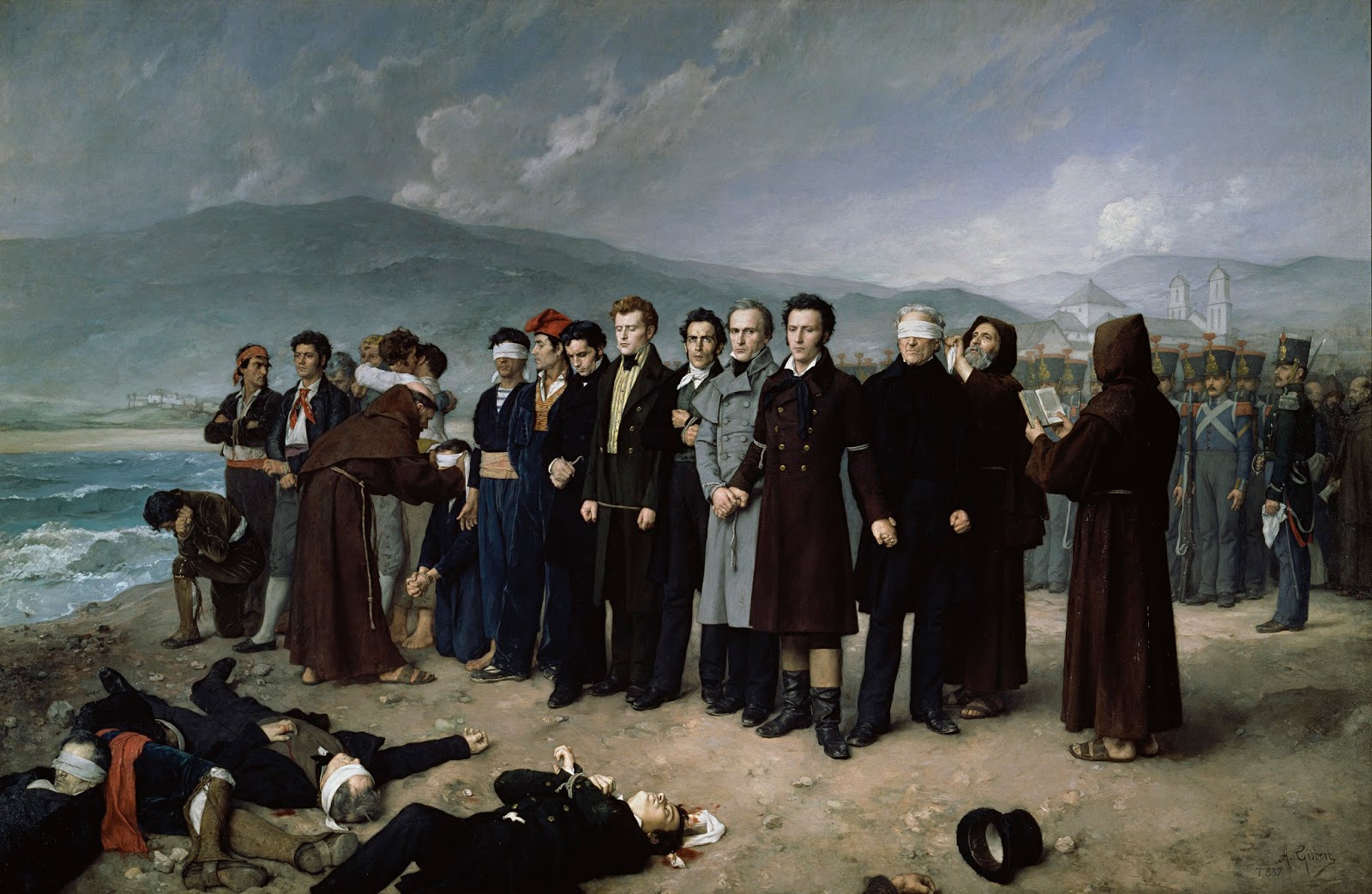Antonio Gisbert: The Execution by Firing Squad of Torrijos and his Companions on the beach at Málaga (1888)
(Museo del Prado, Madrid, Spain)
A painting by the Spanish artist Antonio Gisbert (1834-1901). This historical piece shows a dramatic episode during the 'Ominous Decade' of the reign of king Ferdinand VII of Spain. King Ferdinand VII of Spain was first overthrown by Napoleon in 1808 but after the defeat of Napoleon in 1814, Ferdinand was restored to his Spanish throne. During his 6 year absence the Spanish national assembly (the Cádiz Cortes) had proclaimed a liberal constitution, the Constitution of 1812. Ferdinand VII first said he was going to honor this new constitution but when he was back in power, he quickly abolished it and the Cádiz Cortes, restoring the absolute monarchy in Spain. This rejection led to various revolts and in 1820 Ferdinand was forced to reintroduce a constitution and a liberal assembly was again put into place. Furious for this humiliation, Ferdinand then called for outside help and on 7 April 1823, France launched an expedition with a military corps, known as the One Hundred Thousand Sons of Saint Louis. This French expeditionary force quickly defeated the liberal Cádiz Cortes and restored the absolute rule of Ferdinand. After this restoration, Ferdinand embarked on a period of his reign known as "Ominous Decade" (1823-1833) during which he introduced censorship and hunted down liberal leaders. One of those Spanish liberal leaders was Jose Maria Torrijos y Uriarte (1791-1831) who was in exile after 1823. Torrijos and 60 followers landed in 2 December 1831 at Malaga where Torrijos wanted to signal the start of a revolt against Ferdinand VII by making a proclamation. Torrijos was betrayed however by the local governor who and lured Torrijos to Spain by stating that he would support the revolt. When Torrijos landed, he and his 60 followers were quickly arrested and after a show-trail they were shot on the beaches of Malaga. On the painting Torrijos is the man at the front, holding with both his hands the men next to him (between the man in grey jacket and the blindfolded old man). painting from 1888.
